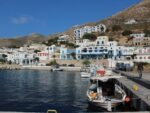Introduction to Greek Ferries
This is a brief overview of the Greek Ferry system for those who are not accustomed to using them
The first concept that needs to be grasped is that there is no cordinated system. Ferries are owned by a large number of seperate mostly commercial companies but pricing and licences are controlled and sometimes subsidisded by the Greek goverment. Contracts on some routes may only be confirmed in the spring so schedules may not be available early in the year
This results in a very complex and variable selection of ferries but basically there are more ferries during peak season May to September and different types of ferries on the same routes.
The majority of ferries to the islands start from the 3 ports of Athens, which are Piraeus, Rafina & Lavrio and radiate out to the islands.
Tickets need to be bought for each trip from the appropriate company. This can be done via a number of online booking websites, directly with the ferry companies online or from agents offices which can be found in or around the ports or in towns on the islands. Tickets can be paper or increasingly as e-tickets.
Ferries range from the large passenger/car ferries which generally run all year round are slower but cheaper and more comfortable in poor weather, to smaller high speed ferries and catamarans which are quicker, more expensive but often have less facilities and can be more uncomfortable and prone to cancellation in bad weather.
The traditional ferry Skopelitis which is run for the benefit of the locals and runs daily from Amorgos to Naxos and has done since 1956!
2021 schedules now available!


Top Tip
Use a ship tracker to see where your ferry is!
Several sites will do this try:
